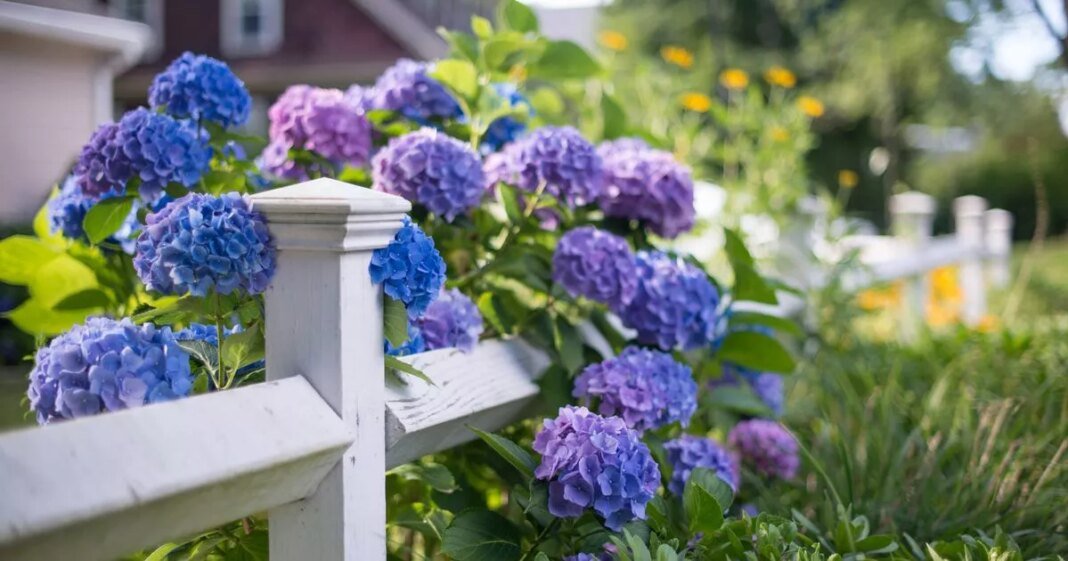Hydrangeas, with their thirst for water, especially during the spring growth spurt, rely on regular watering to bolster robust shoots that will carry their summer blooms. According to gardening insights, failing to adequately water hydrangeas can lead to stress and weak development, resulting in a frail plant scant of buds.
As temperatures rise, these lush flowers need diligent watering, but gardeners have a clever hack up their sleeve to ensure hydrangeas flourish with vibrant blooms: sheep wool. It might seem odd at first, but the agricultural experts at The Celtic Farm hail wool as a “powerful tool” in the horticultural world for its excellent moisture retention properties.
They elaborated on the benefits, revealing: “Wool fibres can hold up to 30 percent of their weight in water, making them excellent for moisture retention. This helps reduce the frequency of watering, protects plants from drought stress, and promotes healthy root development.”
Utilising sheep wool is akin to equipping your soil with a natural sponge; it eagerly absorbs rainwater then gradually releases it back, ensuring that your hydrangeas remain quenched longer between watering sessions.
Beyond just hydration, sheep wool doubles as a natural fertiliser rich in nitrogen – a crucial nutrient hydrangeas crave come spring for developing robust roots and stems, reports the Express.
Providing your hydrangeas with ample nitrogen via sheep wool can lead to more resilient foliage and, consequently, a bounty of larger, more resplendent summertime flowers.
Wool’s coarse texture can help stifle pesky weed seeds from sprouting, and it even contains lanolin, a natural oil that’s like kryptonite to slugs, drying out their slimy coats.
The specialist advised: “Wool pellets also act as a natural weed suppressant and can help deter pests like slugs and snails due to their fibrous texture.
“By using pelletised wool, you not only provide your plants with essential nutrients but also improve soil health and structure, leading to more vigorous and resilient plants. Give it a try and see the difference in your garden!”.
You’ll find sheep wool mulch available at most garden centres or online suppliers, and there are even convenient wool pellets made of compressed wool.
Working with pelletised wool is easy – just blend the pellets into the soil around your hydrangea and give it a little water. A couple of handfuls per shrub should do the trick.
For those opting to use sheep wool mulch, first tidy up the ground and lay down a light covering around the hydrangeas, keeping their bases clear for breathability – too much wetness could spell disaster for the roots.
Whatever approach you choose, be sure to spread the wool uniformly to sidestep any overly damp, clumpy areas that might attract mould or fungus.
Once your sheep wool is all set, bathe it with water, and rest assured, your hydrangeas will stay quenched through the growing season.
At Reach and across our entities we and our partners use information collected through cookies and other identifiers from your device to improve experience on our site, analyse how it is used and to show personalised advertising. You can opt out of the sale or sharing of your data, at any time clicking the “Do Not Sell or Share my Data” button at the bottom of the webpage. Please note that your preferences are browser specific. Use of our website and any of our services represents your acceptance of the use of cookies and consent to the practices described in our Privacy Notice and Cookie Notice.



